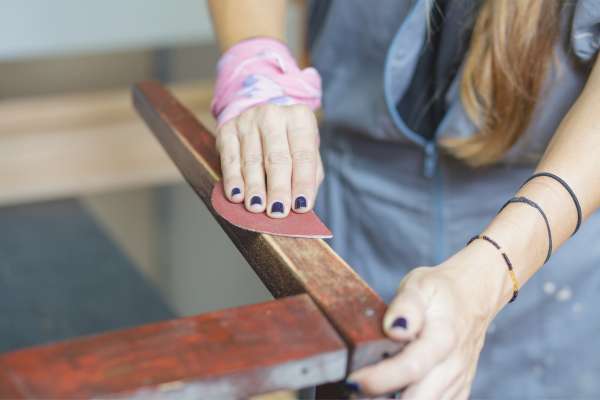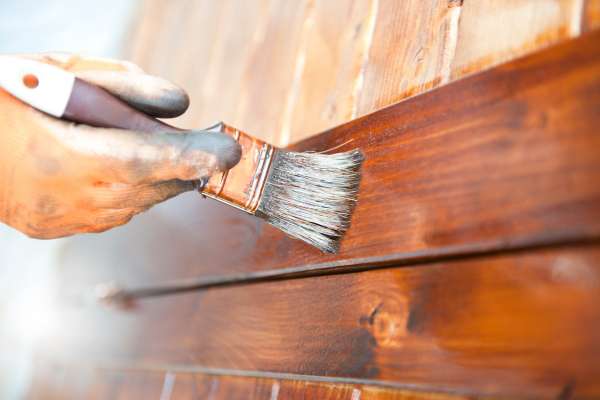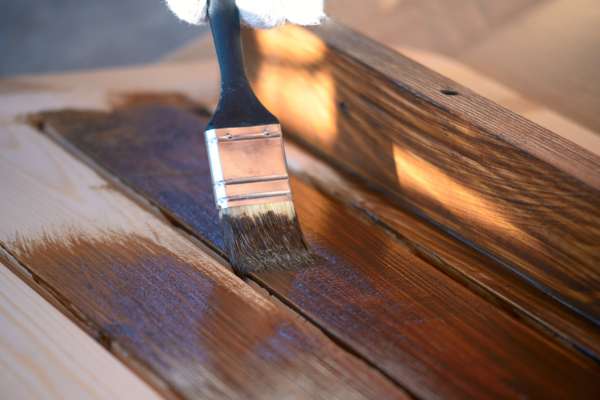Welcome to our guide on how to paint your bedroom furniture without sanding. Discover a hassle-free method to give your furniture a stunning makeover. We will show you how to achieve a beautiful, Professional-looking paint finish on your furniture without the need for sanding. Whether you want to revitalize an old dresser, Update a worn-out nightstand, Or transform your entire bedroom set, Our step-by-step instructions will make the process simple And enjoyable. Discover the secrets to proper surface preparation, Choosing the right paint And tools, And applying a flawless finish that will breathe new life into your bedroom furniture. Get ready to unleash your creativity And create stunning furniture transformations without the sanding hassle!
What Is Furniture Without Sanding?
“Furniture without sanding” refers to a method of painting Or refinishing furniture without the traditional step of sanding the surface beforehand. Sanding is commonly done to remove the existing finish, create a smooth surface, And promote better paint adhesion. However, the furniture without sanding approach skips this step And focuses on alternative techniques to achieve a fresh And durable paint finish. These techniques may involve using specialized primers, DE glossing agents, Or specific types of paint formulated for adhesion to various surfaces. By bypassing the sanding process, this method offers a quicker And more convenient way to transform And update furniture while still achieving satisfactory results.
Importance Of Painting Bedroom Furniture Without Sanding
Painting bedroom furniture without sanding offers several important benefits And advantages:
Time-saving: Sanding furniture can be a time-consuming process, especially if you have multiple pieces to paint.
Convenience: Sanding furniture can be messy, producing dust And debris that needs to be cleaned up.
Preservation of the original finish: Sanding removes the existing finish on furniture, which may be desirable in some cases.
Accessibility: Sanding may not be practical Or feasible for everyone. Some individuals may have physical limitations, allergies, Or sensitivities that make sanding difficult Or impossible.
Versatility: The furniture without sanding method can be used on a variety of surfaces, including wood, laminate, metal, And more.
Preparing The Furniture

1. Gathering Necessary Materials And Tools
Before starting the process of painting bedroom furniture without sanding, It’s important to gather all the materials And tools you’ll need.
This includes:
- Paint,
- Primer,
- Cleaning Supplies,
- Drop Cloth Or Plastic Sheets,
- Paintbrushes Or Rollers,
- Painter’s Tape,
- Screwdriver Or Allen wrench,
2. Cleaning The Furniture Surface
Before applying paint, It’s essential to clean the furniture surface thoroughly. Remove any dust, Dirt, Or grease that might interfere with paint adhesion.
Follow these steps:
- Mix A mild detergent Or cleaner with water in A bucket Or spray bottle.
- Dampen A sponge Or cloth with the cleaning solution.
- Gently scrub the furniture surface, Paying attention to corners, Crevices, And any stains.
- Rinse with clean water to remove any residue.
- Before proceeding on to the following step, let the furniture totally dry.
3. Removing Any Existing Hardware Or Accessories
To ensure a neat And even paint job, it’s recommended to remove any hardware, knobs, pulls, or accessories attached to the furniture. Use a screwdriver or Allen wrench to unscrew And detach these items carefully. Keep them in a safe place for reattachment later.
4. Assessing The Condition Of The Furniture
Take a close look at the furniture to assess its condition. Check for any scratches, dents, or damages that might need repair before painting. Fill in small imperfections with wood filler or putty, And sand those spots lightly to smooth them out. This step helps achieve a more polished And flawless final result.
Repairing And Priming

1. Filling In Any Cracks, Holes, Or Imperfections
Before painting, it’s essential to address any cracks, holes, Or imperfections on the furniture surface. Use a suitable wood filler, putty, Or spackle to fill in these areas. Follow the manufacturer’s instructions to ensure proper application and drying time. Once dry, sand the filled spots gently until they are smooth and level with the surrounding surface.
2. Sanding Specific Areas If Necessary
While the goal is to paint without sanding, there might be certain areas that require light sanding to ensure a smooth and even surface. Focus on rough Or uneven spots, previous paint drips, Or areas where the old finish is peeling. Use fine-grit sandpaper and sand lightly in a circular motion. Wipe away any dust generated from sanding with a clean cloth.
3. Applying A Suitable Primer To Promote Adhesion
To enhance paint adhesion and durability, applying a suitable primer is crucial. Look for a bonding primer specifically designed for the type of furniture material you are working with. A bonding primer adheres well to surfaces without the need for extensive sanding. Apply the primer evenly using a brush Or roller, following the manufacturer’s instructions for drying time.
4. Choosing The Appropriate Primer For Different Furniture Materials
Different furniture materials may require specific types of primers for optimal results. Consider the following primer options:
- Wood Furniture: For bare or stained wood furniture, choose a high-quality wood primer. It helps seal the wood and provides a smooth base for the paint.
- Laminate or Veneer Furniture: Look for a primer formulated specifically for laminate or veneer surfaces. These primers are designed to bond well with these smooth surfaces and prevent peeling or chipping.
- Metal Furniture: Opt for a metal primer that offers good adhesion and rust resistance. This type of primer helps the paint adhere properly to metal surfaces and prevents corrosion.
- Plastic or Resin Furniture: Use a primer formulated for plastic surfaces. These primers create a strong bond and help prevent the paint from peeling or flaking.
Choosing The Paint

1. Selecting The Right Type Of Paint For The Furniture
Choosing the appropriate paint type is crucial for achieving a durable And long-lasting finish on your bedroom furniture. Consider the material of your furniture And the level of durability required. Common paint options include acrylic Or latex paint for wood surfaces, enamel Or spray paint for metal surfaces, And specialty paints for laminate or plastic surfaces.
2. Considering The Desired Finish And Color
Think about the desired outcome And aesthetic of your painted furniture. Determine whether you want a glossy, satin, Or matte finish. Additionally, consider the color scheme And how the painted furniture will complement the overall look of your bedroom. Take into account factors such as lighting And existing décor when selecting the color.
3. Exploring Different Paint Options
There are various paint options available, each with its own characteristics And application techniques. Latex paint is popular for its ease of use, quick drying time, And availability in a wide range of colors. Chalk paint offers a unique, vintage-inspired finish And doesn’t require priming Or sanding. Explore different paint types And choose the one that aligns with your preferences And project requirements.
4. Understanding The Pros And Cons Of Each Type Of Paint
Before making a final decision, it’s important to be aware of the advantages And disadvantages of each type of paint. For example:
- Latex paint: Pros include easy application, quick drying time, And availability in a variety of colors.
- Chalk paint: Pros include a trendy, matte finish And the ability to achieve a distressed look.
- Enamel Or spray paint: Pros include excellent adhesion And durability for metal surfaces, as well as smooth And even application.
- Consider the specific qualities of each paint type, including coverage, drying time, durability, And any necessary additional steps Or products.
Applying The Paint

1. Using A Paintbrush Or Roller For Larger Surfaces
When painting larger surfaces of your bedroom furniture, such as tabletops, dressers, Or wardrobes, consider using a paintbrush Or roller. A paintbrush allows for more precision And control, especially when working on detailed areas Or edges. A roller, on the other hand, is efficient for covering larger areas quickly And evenly. Choose the appropriate tool based on the size and texture of the furniture surface.’How To Paint Bedroom Furniture Without Sanding’
2. Applying Thin And Even Coats Of Paint
To achieve a smooth And professional finish, it’s important to apply thin And even coats of paint. Avoid overloading the brush Or roller with too much paint, as it can lead to drips, uneven coverage, Or a rough texture. Instead, dip the brush Or roller lightly into the paint And work with smooth, even strokes. Apply multiple thin coats rather than a single heavy coat to build up the desired color And ensure proper adhesion. ‘How To Paint Bedroom Furniture Without Sanding’
3. Letting Each Coat Dry Before Applying The Next
Patience is key when painting furniture without sanding. Before adding the following layer of paint, let the previous coat completely dry. Follow the drying time specified by the paint manufacturer, as it can vary depending on the type And brand of paint. Rushing the process can result in uneven drying, tackiness, Or even damage to the finish. Ensure proper ventilation in the painting area to facilitate faster drying.
4. Achieving A Smooth And Professional Finish
To achieve a smooth And professional finish on your painted bedroom furniture, follow these additional tips:
- Avoid excessive brush strokes Or roller marks by using long, smooth strokes And maintaining consistent pressure.
- Check for any drips, bubbles, Or imperfections as you paint, And smooth them out immediately.
- Take care to cover all areas evenly, including corners, edges, And intricate details.
- Consider using a foam brush Or a high-quality paintbrush with fine bristles for a smoother finish.
- If needed, lightly sand between coats with fine-grit sandpaper to remove any imperfections Or rough texture before applying subsequent coats.
Finishing Touches

1. Applying A Clear Protective Topcoat
To enhance the durability And longevity of the painted finish, consider applying a clear protective topcoat. This additional layer adds an extra level of protection against scratches, stains, And fading. Select a topcoat suitable for the type of paint used, such as a water-based polyurethane for latex paint Or a clear enamel for oil-based paint. Follow the manufacturer’s instructions for application, drying time, And any recommended additional coats.
2. Reattaching Hardware Or Adding New Accessories
Once the paint And protective topcoat have dried, reattach the hardware that was previously removed Or consider adding new accessories to enhance the overall look of the furniture. Ensure that the paint And topcoat are fully cured before handling Or reinstalling hardware to avoid any smudges Or damage.
3. Allowing The Furniture To Cure Properly
After painting And applying any necessary topcoats, it’s important to allow the furniture to cure properly before using Or moving it. Curing time can vary depending on the type of paint And topcoat used, as well as environmental conditions. Refer to the paint And topcoat manufacturer’s instructions for the recommended curing time. During this period, avoid placing objects on the painted surfaces Or subjecting them to heavy use Or cleaning. How To Paint Bedroom Furniture Without Sanding.
4. Cleaning Up The Work Area And Tools
Once you have completed the painting process, take the time to clean up the work area And tools. Properly dispose of any paint cans, brushes, Or rollers according to local regulations. Clean your brushes And rollers thoroughly using the appropriate cleaning agents, whether water Or solvent-based, to remove any residual paint. Store your tools properly to maintain their quality for future use.’How To Paint Bedroom Furniture Without Sanding’
Troubleshooting And Tips
1. Common Issues Encountered While Painting Furniture
While painting furniture without sanding, you may encounter a few common issues:
- Drips: Excess paint can sometimes accumulate And create drips on the furniture surface.
- Brush Marks: Visible brush strokes may appear if the paint is not applied evenly Or if the brush used has stiff bristles.
- Uneven Surfaces: The furniture may have uneven areas due to previous damage Or inconsistencies in the surface texture. How To Paint Bedroom Furniture Without Sanding.
2. Solutions For Drips, Brush Marks, Or Uneven Surfaces
To address these issues To Paint Bedroom Furniture Without Sanding:
- Drips: If you notice drips, gently brush Or roll over them while the paint is still wet to smooth them out. Alternatively, allow the paint to dry And lightly sand the dripped areas with a fine-grit sandpaper. Apply a thin layer of paint to touch up those spots.
- Brush Marks: To minimize brush marks, use a high-quality brush with soft bristles And apply the paint with long, smooth strokes in one direction. Work in smaller sections to maintain control And achieve a more uniform finish. If brush marks persist, lightly sand the surface between coats And apply additional thin coats of paint.
- Uneven Surfaces: For furniture with uneven surfaces, use a small brush Or foam brush to reach into crevices Or corners. Apply additional coats of paint to build up the desired coverage And help even out the appearance. If necessary, use a light touch of sandpaper to smooth any rough areas before applying subsequent coats.
3. Tips For Achieving A Professional Result
Consider the following tips for achieving a professional finish To Paint Bedroom Furniture Without Sanding:
Prepare the surface properly by cleaning, repairing any imperfections, And applying a suitable primer.
- Use high-quality paint And tools to ensure better coverage And a smoother application.
- Apply thin And even coats of paint, allowing each coat to dry fully before applying the next.
- Pay attention to details, such as edges, corners, And intricate areas, to ensure complete coverage.
- Work in a well-ventilated area to promote proper drying And minimize the risk of dust Or debris settling on the painted surface.
4. Precautions To Take During The Painting Process
To avoid potential issues To Paint Bedroom Furniture Without Sanding:
- Protect the surrounding area with drop cloths Or plastic sheets to prevent accidental spills Or splatters.
- Take breaks between coats to rest your hands And allow the paint to dry properly.
- Follow the paint manufacturer’s instructions regarding drying time, curing time, And any recommended safety
The Final Thoughts
In conclusion, Painting bedroom furniture without sanding can be a practical And efficient way to transform the look of your furniture And revitalize your bedroom. By following the step-by-step process And implementing the tips And techniques discussed, You can achieve remarkable results without the need for extensive sanding. With patience, Attention to detail, And proper curing time, You can achieve a professional-looking result that breathes new life into your bedroom furniture. Enjoy the satisfaction of a refreshed space that reflects your personal style, All achieved without the need for extensive sanding. Happy painting!
